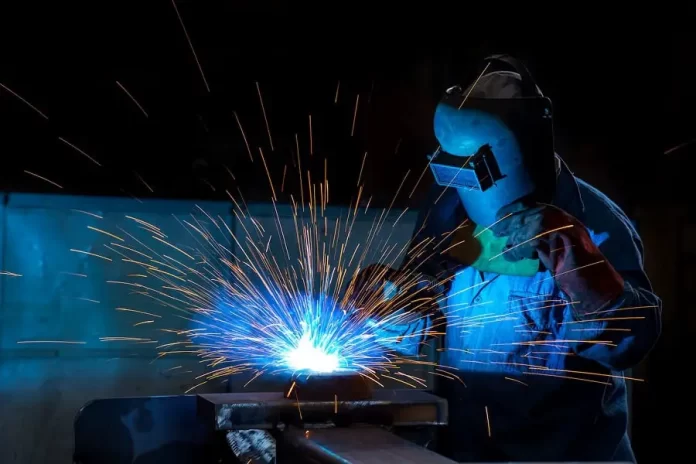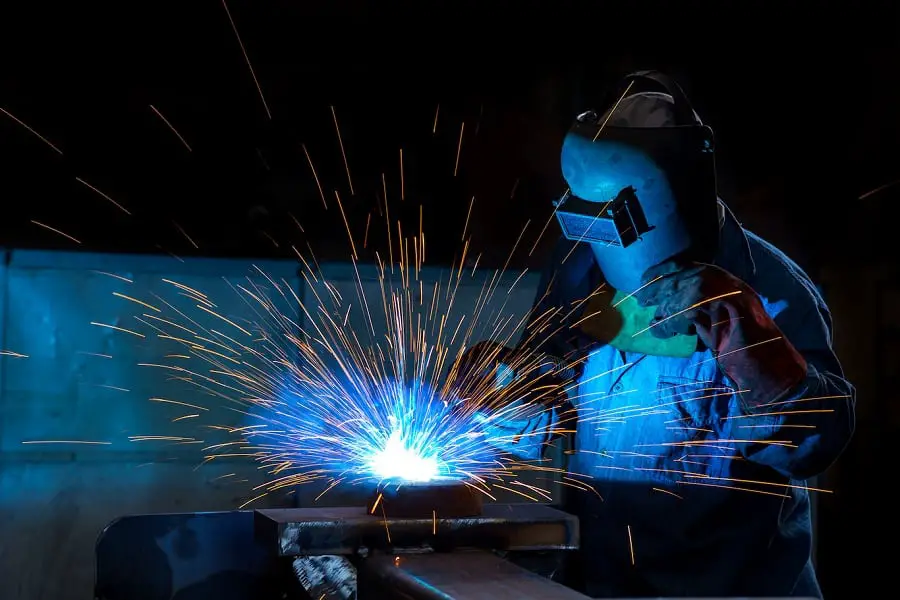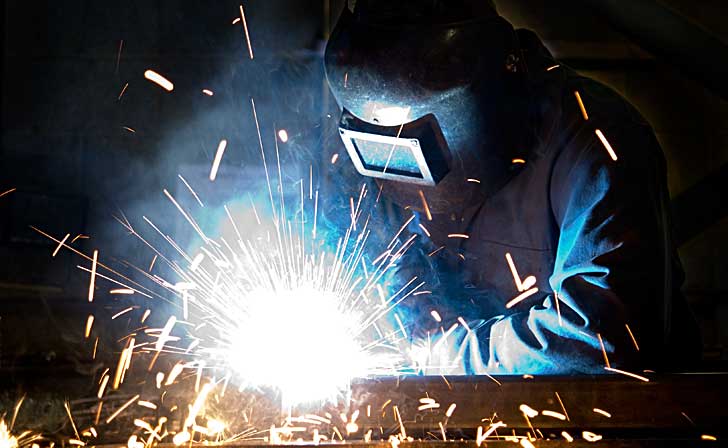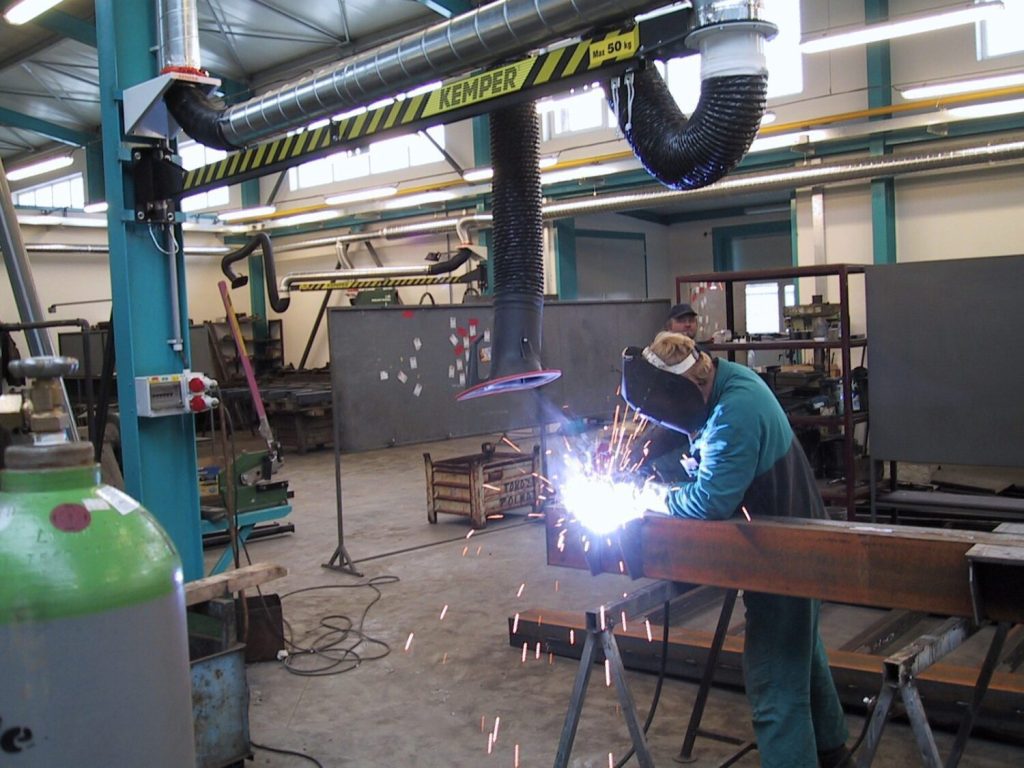Welding sparks, those bright and fiery light displays, are a common sight when welding. Have you ever wondered what exactly causes these sparks to fly?
In this article, we will explore the various factors contributing to the creation of welding sparks, shedding light on this fascinating phenomenon.
From the type of welding process to the materials being welded, join us as we uncover the secrets behind the mesmerizing sparks that fill the air during welding.
Overview of Welding Sparks
Welding sparks are a common and significant phenomenon that occurs during the welding process. The definition of welding sparks and their importance is crucial to understanding the underlying processes and potential hazards associated with welding.
Definition of welding sparks
Welding sparks are microscopic particles emitted during the welding process. They are tiny, glowing, hot metal fragments expelled from the welding arc and workpiece due to the intense heat generated during welding.
Depending on the welding method and material being welded, these sparks can vary in size, shape, and intensity.
Importance of understanding welding sparks
Understanding welding sparks is essential for several reasons. Firstly, it helps welders and other personnel working in welding environments to be aware of the potential safety hazards associated with sparks. By recognizing and controlling these hazards, the risk of accidents, fires, and explosions can be minimized.
Second, comprehending the physical and chemical processes in forming welding sparks can improve welding techniques and efficiency. Lastly, understanding welding sparks can pave the way for developing new technologies and strategies to manage and mitigate spark-related issues in various industries.
Physical Processes Involved in Welding Sparks
To fully grasp the nature of welding sparks, it is essential to examine the physical processes that occur during welding, leading to the formation of sparks.
Heat generation and transfer
Welding sparks directly result from the intense heat generated during the welding process. The heat is produced by an electric arc that generates temperatures ranging from several thousand to tens of thousands of degrees Celsius at the point of contact between the electrode and the workpiece.
This extreme heat causes the workpiece material to melt, creating a pool of molten metal. When the molten metal droplets are propelled out of the arc zone due to electromagnetic forces, they solidify rapidly, forming the glowing sparks we observe.
Electrical arc formation
The formation of an electrical arc is crucial in generating the heat needed for welding sparks. An electrical arc is created by establishing a low-resistance path between the welding electrode and the workpiece.
When a sufficient electrical potential or voltage is applied, an ionized column of gas forms, carrying the electrical current. This electrically conductive path allows the formation of a stable arc, providing the intense heat required for the welding process and, consequently, generating sparks.
Chemical Reactions in Welding Sparks
While the physical processes play a significant role in forming welding sparks, chemical reactions also contribute to their characteristics and appearance.
Combustion reactions
Welding sparks undergo combustion reactions when they come into contact with oxygen in the surrounding atmosphere. Combustion is a rapid chemical reaction between a flammable material and oxygen that releases energy through heat and light.
When welding sparks are expelled from the welding arc, they are exposed to the oxygen-rich air, leading to combustion. This combustion process contributes to the glowing appearance and heat welding sparks release.
Oxidation reactions
Oxidation reactions also occur during the formation of welding sparks. Oxidation involves the loss of electrons by a substance when it interacts with oxygen.
The molten metal droplets expelled from the welding arc react with the oxygen in the air, forming metal oxides. These metal oxides contribute to the unique colors and composition of welding sparks, depending on the welded material.
Factors Affecting the Formation of Welding Sparks
Several factors influence the formation of welding sparks, including the welding process, material composition, and electrical parameters.
Type of welding process
Different welding processes generate sparks with varying characteristics. For instance, arc welding processes like shielded metal arc welding (SMAW) and gas metal arc welding (GMAW) often produce brighter and more intense sparks compared to other welding methods like laser welding or resistance welding.
The presence or absence of flux or shielding gases, as used in different welding processes, can also impact the formation and appearance of sparks.
Material composition
The composition of the material being welded dramatically affects the formation of sparks. Each metal or alloy has unique properties, including melting points, thermal conductivity, and reactivity with oxygen.
When exposed to the extreme temperatures of the welding arc, different metals exhibit various behaviors, resulting in sparks with distinct characteristics.
For example, welding stainless steel can generate sparks that are primarily composed of chromium oxide, while welding aluminum produces sparks with a silvery appearance due to the presence of aluminum oxide.
Electrical parameters
The electrical parameters employed in the welding process, such as current, voltage, and polarity, influence the formation and intensity of welding sparks. Higher currents and voltages typically generate more excellent heat, producing more intense sparks.
The choice of polarity (direct current electrode positive or negative) also affects the electrode erosion rate, influencing the number and size of sparks expelled from the welding arc.
Nature of Welding Sparks
Welding sparks possess distinct appearances and characteristics, reflecting the physical and chemical processes involved in their formation.
Appearance and Characteristics
Welding sparks exhibit a range of sizes and shapes. Depending on the welding parameters and the material being welded, they can range from specks to larger globules.
Sparks often appear as bright, incandescent particles that glow with various colors, including yellow, orange, red, and white. The intensity of sparks can vary, with some producing a brief burst of activity and others continuing to burn and glow for extended periods.
Temperature and energy release
Welding sparks can reach incredibly high temperatures, often exceeding the melting point of the welded material. The intense heat generated during the welding process contributes to the high temperatures observed in sparks.
The energy released by welding sparks is significant and can pose safety hazards if not properly managed. The combination of high temperature and energy makes welding sparks a potential ignition source for fires and explosions.
Safety Hazards Associated with Welding Sparks
While welding sparks may seem mesmerizing and beautiful, they pose several safety hazards that must be taken seriously in any welding environment.
Fire hazards
One of the primary safety concerns associated with welding sparks is the risk of starting fires. Sparks that land on flammable materials, such as clothing, paper, or fuel, can ignite and rapidly spread, endangering workers’ lives and causing significant property damage.
The intense heat and glowing nature of sparks make them capable of igniting even small fuel sources. To prevent fires, it is essential to have proper fire prevention measures in place, including clear work areas, fire-resistant materials, and appropriate fire extinguishing equipment.
Explosion hazards
In addition to fire hazards, welding sparks can contribute to the risk of explosions. When sparks come into contact with flammable gases or liquids, such as fuel vapors or certain chemicals, they can ignite, leading to explosions.
This is particularly critical in confined spaces or environments that contain explosive substances. Proper ventilation, hazardous area classification, and strict adherence to safety standards and regulations are necessary to prevent explosions.
Prevention and Control of Welding Sparks
Preventing and controlling welding sparks is vital to ensure personnel’s safety and the work environment’s integrity.
Safe work practices
Implementing safe work practices is the first defense against welding spark hazards. This includes maintaining a clean and clutter-free work area where flammable materials are kept from the welding operation.
Regular inspections and maintenance of welding equipment can also minimize the risk of malfunctioning equipment that may exacerbate spark hazards.
Staff training and awareness programs should be conducted regularly to educate workers on best practices, including proper containment and disposal of welding debris.
Personal protective equipment
Wearing appropriate personal protective equipment (PPE) is crucial to protect individuals from welding spark-related hazards. PPE should include flame-resistant clothing, gloves, safety glasses with side shields, and welding helmets with clear and impact-resistant lenses.
The PPE should be appropriately selected, fitted, and regularly inspected for any signs of damage or wear. Appropriate PPE should be reinforced through comprehensive training programs and strict adherence to safety protocols.
Welding Sparks and Environmental Concerns
Apart from the safety hazards, welding sparks can also have environmental implications that must be considered.
Air pollution
The combustion reactions occurring in welding sparks release gases, vapors, and particulate matter into the air. These emissions can contribute to air pollution, particularly in enclosed or poorly ventilated areas.
Welding fumes and particles generated by sparks may contain hazardous substances such as metal oxides, ozone, and volatile organic compounds (VOCs). Proper ventilation systems, localized exhaust hoods, and regular air quality monitoring are essential to minimize the environmental impact of welding sparks.
Health risks
Exposure to welding sparks and the associated fumes can harm human health. Inhaling welding fumes and fine particles may lead to respiratory problems, such as asthma, bronchitis, and lung damage.
Prolonged exposure to hazardous substances emitted during welding can also result in long-term health complications. Adequate personal protective equipment, proper ventilation, and regular medical monitoring of workers are critical to mitigate the health risks associated with welding sparks.
Applications and Industrial Uses of Welding Sparks
While welding sparks are primarily a safety concern, they have several practical applications within various industries.
Metalworking industry
The metalworking industry heavily relies on welding processes for joining, fabricating, and repairing metal components. Welding sparks are often an unavoidable byproduct of these processes.
By understanding the physical and chemical characteristics of welding sparks, experts in the metalworking industry can improve welding techniques, enhance product quality, and optimize the efficiency of manufacturing processes.
Automobile manufacturing
The automotive industry extensively employs welding to assemble vehicle frames, body panels, and other components. Welding sparks are an inherent part of this production process.
Effective management of welding sparks is crucial to ensure the quality and longevity of the welded joints while also addressing safety concerns associated with potential hazards.
Future Trends in Welding Spark Management
As technology advances, the management and control of welding sparks are expected to undergo significant developments.
Advances in spark suppression technology
Efforts are underway to develop advanced spark suppression technology that can minimize or even eliminate the formation of welding sparks. These technologies aim to interrupt the spark generation process or actively suppress sparks as they form.
By employing innovative materials, coatings, and engineering solutions, spark suppression systems can enhance welding operations’ safety, productivity, and environmental sustainability.
Automation and robotics in welding
The integration of automation and robotics in welding processes has the potential to revolutionize spark management. Automated welding systems can be programmed to optimize welding parameters, reducing the formation and intensity of welding sparks.
By eliminating the human element, automated welding systems can ensure precise control over welding processes, improving safety and quality. Incorporating spark detection and monitoring systems into robotic welding cells can provide real-time information for proactive spark management.
In conclusion, welding sparks result from the physical and chemical processes occurring during welding. Understanding the formation and nature of welding sparks is crucial for ensuring safety, improving welding techniques, and addressing environmental concerns.
Welding sparks can be controlled and effectively used in various industrial applications by implementing proper safety practices, utilizing personal protective equipment, and exploring advancements in spark management technology.











































